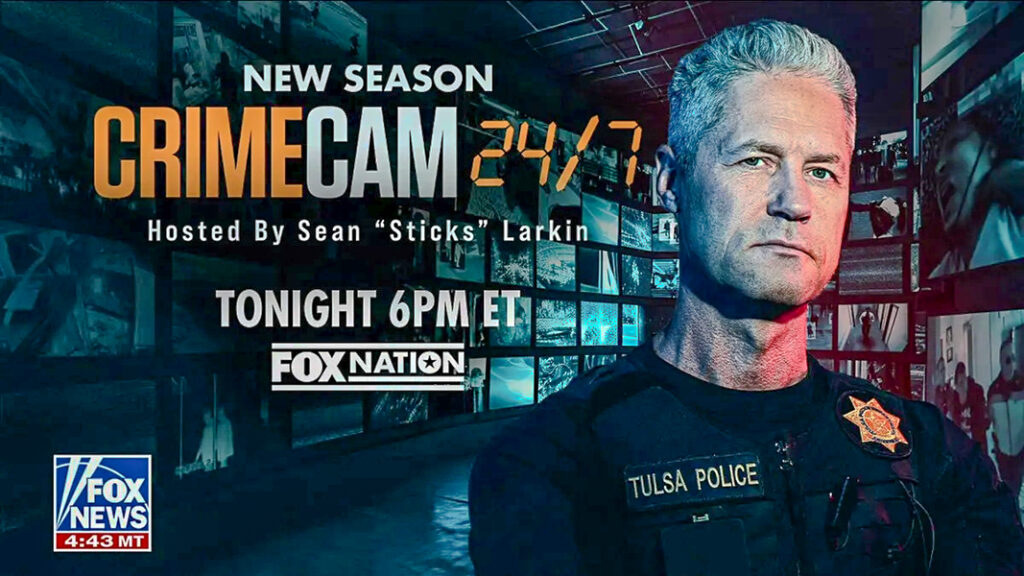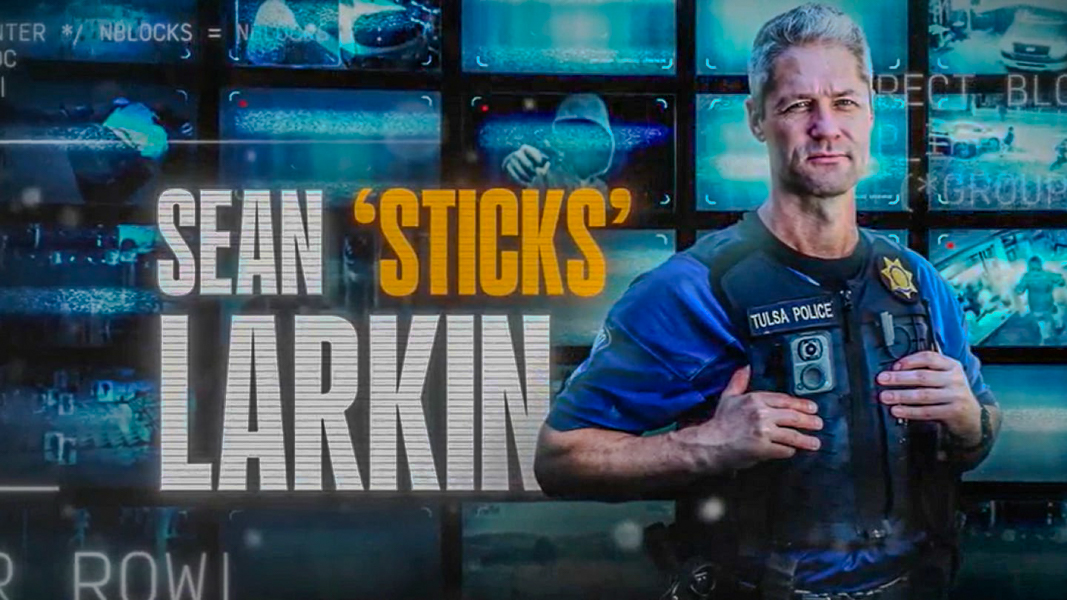By G.W. Schulz
Lt. Sean “Sticks” Larkin of the Tulsa Police Department didn’t seem aware of the conflict in his 2021 testimony during a shooting trial.
Larkin told the jury that he cared about the community in low-income north Tulsa.
Later, however, Larkin testified that the same community in north Tulsa didn’t have as many “angels” as the rest of the city. It wasn’t just the suspects and defendants who were trouble, Larkin said under oath.
The victims and witnesses in north Tulsa were “not angels,” either. But there’s no meaningful method for measuring angelness.
The jurors didn’t buy Lt. Larkin’s testimony. They acquitted Norwood.Law client Demarchoe Carpenter of shooting a man five times. Joseph M. Norwood represented Carpenter: “I would have been shocked if the jury found him guilty, because there is so clearly reasonable doubt.”
Larkin had been assigned the lead investigator in the case and wanted Carpenter convicted. The acquittal should have been embarrassing.
It was one of Larkin’s final cases before he retired from the Tulsa Police Department. Larkin has since continued a career in police reality TV, and podcasting, and social media, and book publishing.
By the time Lt. Larkin showed up in Demarchoe Carpenter’s life, Demarchoe already had a wrenching story to tell about injustice in America.
He’d spent 22 years locked away in Oklahoma’s prison system for a 1994 drive-by killing he didn’t commit. A Tulsa judge later said that he and a co-defendant, Malcolm Scott, were not just denied a fair trial, they were innocent.
Carpenter and Scott had grown up together in north Tulsa. They were released from prison in 2016.
With those facts in mind, Lt. Sean Larkin testified in Carpenter’s new shooting case. He told the jury that he had served for the police department in north Tulsa out of choice. But as his testimony makes clear, he also had difficulty distinguishing between non-criminals and criminals:
“The majority of my victims, my suspects, my witnesses – they’re not angels. And a lot of those people do not cooperate with the police regardless if they’re a victim, (or) if they’re a witness. Oftentimes – more often than not – our suspects don’t.”
Larkin then doubled down on north Tulsa:
“If there’s a play in hell, there are no angels.”
Lt. Larkin might have viewed our client as no angel. But that didn’t make Demarchoe Carpenter guilty of shooting someone five times.
So who is Tulsa Police Lt. Sean Larkin, and why did an Oklahoma jury rule against a handsome TV cop in a law-and-order state?
Keep reading below to learn the rest of this extraordinary story.
In the meantime, do you need an advocate who cares?
It’s not just criminal defense we practice. If you find yourself trapped in a personal injury, business, or family conflict, Norwood.Law has the experience you need practicing in federal, state, and municipal courts.
Attorney Joe Norwood has successfully represented clients in jury trials, settlements, pleas, and more. Visit Norwood.Law or call 918-582-6464 for a consultation.
A media star rises
Lt. Sean Larkin retired from the Tulsa Police Department in 2021 after 25 years on the force and after his defeat to Norwood.Law in the Demarchoe Carpenter case.
He’s tall with California good looks. After a career policing in Tulsa, Larkin learned that TV cameras and social media liked him as a law enforcer who keeps us safe from the “bad guys.”
First he was filmed by a TV crew as he performed his job in Tulsa for the police reality show “Live PD.” It reportedly became the most-watched show on the A&E cable network at one time.
Larkin eventually became a co-host of the show. He provided expert analysis as an experienced law enforcer. Along the way, he became a social media celebrity.
The show’s format involved “Live PD” film crews capturing video of police in select cities around the country enforcing the law in near-real time as the show broadcast to viewers.
But “Live PD” was canceled after four seasons as criticism of police heated up during the nationwide Black Lives Matter protests.
“Live PD” aired almost 300 episodes over four seasons. Many of those episodes were filmed in Tulsa. Later there were spin-offs.
Meanwhile, A&E ultimately paid a price for its decision to yank “Live PD.” Viewership tanked in the months that followed the show’s cancellation.
With all of this as a backdrop, Larkin’s public profile ballooned further when he began dating the music-making megastar Lana Del Rey in 2019. Larkin attended the Grammys with her and was asked by the media if he was nervous to be at the event.
Larkin humble-bragged:
“[Police] drive cars 120 miles per hour. I don’t want to sound like a tough guy, but I mean, when you’re behind a known shooting suspect and he jumps out the car running, you’ve got to get out chasing. … Taking pictures and answering questions, I’m not trying to sound like a bravado tough guy, just like, you know. It was enjoyable, for sure.”
For a time after 2018, Lt. Larkin says he worked six days a week. He was serving in the gang unit of the Tulsa Police Department while filming episodes of “Live PD.”
The show was clearly produced with a bias for entertainment. Everyday people who appear on camera often say they don’t want to be filmed, according to the New York Times.
But A&E said it was using the same newsgathering standards as a newspaper or a news station. It said the show was “entertainment with purpose” and that it promoted the “transparency of policing in America.”
Origin of a name
For much of Larkin’s career with the Tulsa Police Department, he worked in so-called specialty units. In response to a question during the Carpenter trial about his career, Larkin couldn’t resist boasting that he was more than just a department functionary:
Q: You’re still one of the guys?
A: Yes, sir, always will be.
Q: And when you say, “one of the guys,” do you have a certain notoriety in certain areas of town? People know you?
A: Yes.
At times during his testimony, Larkin impressively responds to questions with careful, considerate answers. But in his book, Larkin can’t avoid indulging bravado.
The Bloods and Crips street gangs were a national sensation in the media during the 1990s. Larkin paints a gory and alarming picture of depravity and violence during that time. But he cites no data or research to support the explosive claim made below:
“Corpses would litter the streets of [Los Angeles] when the Bloods would go on a spree. And they were territorial as sharks. A gang of Bloods could swallow up whole neighborhoods, holding the streets like feudal warlords.”
The “Sticks” nickname was given to Larkin on an infamous occasion when he brazenly broke department rules. Larkin writes in his book that he was on a ride-along as an intern before he became a sworn officer. One day they “got in a car chase with some gangsters.”
“I don’t know what got into me. We were all hyped up – our energy flowing,” Larkin wrote.
Larkin tackled a fleeing suspect to the ground. When the officers responsible for him caught up, they were furious. One called him “Fuck Sticks.”
That became “Sticks.”
Larkin today acts shy about the name and calls it just something people said to him on the streets.
But it’s clear he loves being known that way. It’s used for promoting the reality shows, his book, his podcast, and his social media profiles.
Brand of justice
Lt. Larkin was assigned the Sheldon Reed shooting case on Aug. 8, 2019. But the investigation was troubled from the start.
While interviewing Reed, Larkin made a startling statement, according to a recording.
He suggested that Norwood.Law client Demarchoe Carpenter had tricked the system three years before. That’s when a Tulsa judge found that Carpenter had been wrongfully convicted of a 1994 murder.
“But we’re gonna put him away on this one, okay?” Larkin said to Reed on the tape.
The vow made it seem like the Tulsa police and Lt. Larkin were pursuing their own brand of justice where the courts had already exonerated Demarchoe Carpenter.
When Reed had called 911, he couldn’t say who shot him. Says Joseph M. Norwood, Demarchoe Carpenter’s attorney:
“[Reed] said two or three times that he didn’t know who did it. Then two days after saying that he didn’t know who did it, he meets with (Lt. Sean) Larkin and then remembers who did it.”
Authorities went on to issue a warrant for Carpenter’s arrest.
The nightmare was happening all over again for Demarchoe.
Larkin said he was only trying to reassure a crime victim that police were doing their best to investigate the case.
But at that moment of his promise to Sheldon Reed, Lt. Larkin had not interviewed any other witnesses. Larkin later admitted that he had pursued our client Demarchoe Carpenter based on Sheldon Reed’s claims alone. Said Joseph M. Norwood:
“Larkin testified and said Reed told him that Demarchoe did it. But a doctor is saying that Reed was showing signs of being delusional at the time. Those are facts that are not good for the state’s case. … This is someone who had PCP in his system at the time, was shot five times. Massive trauma.”
48 years in prison
There was no forensic evidence at all that tied Demarchoe Carpenter to the Reed shooting.
This is tragically common among wrongful convictions. In five such Norwood.Law cases, police and prosecutors had no physical evidence. They relied instead on a small number of witnesses.
In two cases, there was just one witness.
A witness in one of those cases admitted under oath to having only seen the perpetrators of a deadly robbery for two to three seconds. She was also shot in the head and survived.
The man who was sent to prison for that crime is our client, Glynn Simmons. In 2023, Simmons became the longest-serving wrongfully convicted man in America when a judge declared him innocent of a 1974 murder. By the time of his release with help from Norwood.Law, Simmons had spent 48 years in prison.
At the time of his trial in 1975, scientists had yet to made crucial discoveries that challenged what we thought we knew about human memory and the reliability of eyewitness testimony.
In addition to faulty eyewitnesses, wrongful convictions are also fueled in part by what psychologists and other scientists call “confirmation bias.” That’s the innate tendency among human beings, from birth, to gravitate toward information that favors an existing hypothesis or opinion.
When people experience confirmation bias, which we all do, it conveniently pushes away discomforting information that conflicts with our existing opinions or assumptions.
There’s also so-called “tunnel vision” in which investigators at the outset of an investigation narrow their attention too much to a specific suspect while rejecting alternatives. This can lead to an unconscious filtering of information as the investigation proceeds.
One pair of researchers looked at why confirmation bias and “thinking errors” were detectable in 50 wrongful-conviction cases and investigative failures. They wanted to know what went wrong and why:
“Media frenzy, ambition, ego, and office pressures for convictions can combine with cognitive bias and create the potential for a wrongful conviction. The idea of a ‘conviction psychology’ in a prosecutor’s office is the pervasive sense that all defendants are guilty, where racking up convictions is akin to ‘wins’ for a sports team. Only winning prosecutors will be successful in most prosecutors’ offices.”
There are others
Demarchoe Carpenter isn’t our only wrongful-conviction case at Norwood.Law.
We have a total of five clients who were convicted and sent to prison with no physical evidence and a heavy reliance on shaky eyewitness identifications. These men were Demarchoe Carpenter, Malcolm Scott, Glynn Simmons, Perry Lott, and Corey Atchison.
Norwood.Law client Corey Atchison only wanted to be a Good Samaritan when he and three friends in 1990 were driving through an area east of downtown Tulsa and turned a corner. The headlights of their car revealed a male shooting victim in the street. Atchison yelled for someone to call 911. Then he and his friends hung around the scene for two hours.
Despite this, police quickly narrowed their attention to Atchison for reasons that were never clear. He ultimately spent 28 years in prison before we intervened to help free him in 2019.
On the witness stand, two people recanted their statements to police after initially naming Atchison as the shooter. A third witness recanted his testimony 26 years later, which caused the case to collapse entirely.
All three recanting witnesses were teenagers at the time of the shooting. When a judge in Tulsa eventually declared Atchison innocent, she said that the witnesses in his case had been coerced by police.
The story somehow gets more bizarre. Astonishingly, Corey Atchison wasn’t the only member of his family to be wrongfully convicted and sent to prison for years.
Atchison is the brother of Malcolm Scott, who was the co-defendant along with Demarchoe Carpenter in the 1994 driveby shooting described above. Another man eventually confessed in 2014 to carrying out the driveby.
Once again, there were allegations of witness coercion by police.
Then in 1988, Norwood.Law client Perry Lott was convicted of rape. After 30 years in prison, DNA testing excluded Lott from the rape kit in his case. He had been sent to prison by the office of former Pontotoc County District Attorney Bill Peterson in Ada.
Lott became the sixth-known person Peterson’s office sent to prison who was eventually exonerated.
In the Glynn Simmons case, more than a dozen people by 2023 had signed sworn affidavits or testified that Simmons was in his hometown of Harvey, Louisiana, when a 1974 robbery and murder occurred at an Edmond liquor store.
He was sent to prison on the testimony of a woman who’d only briefly glanced at the suspects. Police reports from the case raise questions about who the witness actually identified during lineups. But these documents were kept from Simmons for years.
‘The Shield’
In a 2020 New York Times profile, Lt. Sean Larkin criticized the media for inaccurate portrayals of police.
“A movie like ‘Training Day’ came out, great movie, loved it. But it painted police in a bad light. ‘The Shield,’ which was a TV show that used to be on FX, great show. But the cops are these rogue guys who run around stealing drugs, and committing murders, and things like that.’”
He continued: “It makes great TV. But for people who have had bad experiences with police or in life or just whatever reason, they see these things and they think that’s how the cops really are.’”
Again there’s a conflict. Some justice reformers and activists say that police reality shows like “Live PD” result in problematic portrayals of North Tulsa residents. The subjects of the show become “not angels” before a mainstream audience.
According to the New York Times, several police departments around the country ended their cooperation with the show “over concerns about bad publicity.”
For a time after 2018, Lt. Larkin says he was working six days a week. He served in the gang unit of the Tulsa Police Department while filming episodes of “Live PD.”
The show was clearly produced with a bias for entertainment. Everyday people who appear on camera often say they don’t want to be filmed, according to the Times.
But A&E said they were using the same newsgathering-standards as a newspaper or a news station. The network added that the show promoted the “transparency of policing in America” and called it “entertainment with purpose.”
Drug warrior
Lt. Larkin grew up in San Francisco and attended a predominantly black school there. He later moved to Tulsa for college.
His career ran parallel with America’s ongoing, decades-long War on Drugs. He often worked drug cases in Tulsa as part of the job.
Larkin describes one drug case in his book that occurred after 2007. Larkin and an agent from the federal Bureau of Alcohol, Tobacco, and Firearms, Brandon McFadden, went to a residence for a “knock and talk.” This involves police attempting to interview potential suspects without a search warrant.
A man inside the apartment they were targeting wasn’t eager to consent to a search but did so.
After a period of time, the ATF agent emerged from a bedroom with what he and Larkin guessed was about two pounds of methamphetamine.
From Larkin’s book:
“At the time, I think it was the most drugs I’d ever seen in person. … I took a few minutes to call in the arrest to my captain as well as some other guys in my squad. It was a fat seizure for those days, and we wanted everyone to know what we’d found.”
But all along, it turned out, another faction of the Tulsa Police Department was investigating the same apartment where the methamphetamine was found.
An angry investigator from the other team called Larkin. They already had search warrants and had planned to serve them the following day.
But Larkin didn’t seem phased. He blamed it on the feds:
“Unfortunately, in this situation, we helped an ATF agent with a follow that just so happened to lead to a location that one of our best narcotics investigators was already holding paper for.”
‘From the streets’
Lt. Larkin relentlessly argues in his book that a prolonged federal corruption investigation of the Tulsa Police Department in 2010 was a sham and unfair. Larkin was ensnared along with a partner, Officer Jeff Henderson,
The Tulsa World first broke the news in 2009 that a federal police probe was underway. Officer Henderson and ATF Agent Brandon McFadden were eventually accused of faking a drug buy and coaching a drug informant in 2007.
At least six defendants were ultimately accused of crimes. Two pleaded guilty. Three were acquitted at trial. Henderson was convicted on perjury and civil rights charges.
Citing a source “from the streets,” Sean Larkin fumed in his book that people with existing charges against them were trying to work out deals for providing information to federal investigators about police corruption.
“Some of the deals the feds were cutting required no proof. To get their cases dismissed, these informants just had to lie. They just had to make the investigators believe that they’d been falsely arrested. In many cases, this isn’t hard to do. It gets even easier if the person telling you the story is really and truly motivated.”
Yet again there’s conflict. The Sheldon Reed case against Demarchoe Carpenter rested on equally thin evidence.
Lt. Larkin had hinged the entire Reed shooting investigation on just one witness. In his book, however, Larkin describes his investigative prowess as vigorous and thorough:
“Actual detective work isn’t what you might see on TV. It’s silent. Painstaking. Careful. Most of the time, you’re collecting data. Moving slowly, incredibly slowly, you hang each bit of evidence like an ornament on the Christmas tree. You’re waiting for something to click into place.”
It didn’t take long after Sheldon Reed was shot for something to click into place for Lt. Larkin.
He was the one to request that the Tulsa County District Attorney’s Office pursue the Reed shooting case against Carpenter. But all prosecutors had was Reed’s memory after being shot five times in the dark.
Intent to kill
The shooting trial of Demarchoe Carpenter in May of 2021 lasted five days.
Larkin’s testimony took place in the afternoon. During questioning, Carpenter attorney Brett Behenna asked Lt. Larkin about his interview with Sheldon Reed in the hospital after the shooting.
The interview made it seem as though Lt. Larkin had promised Reed retribution against our client. Behenna questioned Larkin about it:
Q: And at that point you say, “He might have beat that murder, but we’re going to get him on this”?
A: That’s correct.
Q: You have interviewed no other witnesses at that point?
A: That’s correct. I had a positive identification from a shooting victim. And as I stated earlier, I was trying to let him know that, hey, we’re going to get him into custody for shooting you.
Q: Right. And, in fact, two days later, you did that very thing. You filed an arrest warrant to arrest Demarchoe Carpenter.
A: Yes, sir.
Q: Without interviewing any witnesses, right?
A: That’s correct.
Q: Without finding any corroborating evidence of Sheldon’s story?
A: Correct.
Despite such testimony, Carpenter was facing major disadvantages at his trial. Among them was the fact that he was a black man who’d already been to prison for over 20 years.
He was up against the credibility of the Tulsa County District Attorney’s Office, plus a tall, handsome TV star with over two decades in Oklahoma law enforcement.
In the end, Larkin wasn’t persuasive enough. The jury returned a verdict of not guilty against Demarchoe Carpenter.
Larkin’s dashing appearance and charm had not persuaded the jurors.
Just days after the jury acquitted Carpenter, Lt. Larkin confirmed his retirement to the Tulsa World:
“I have other things going on – other opportunities.”





